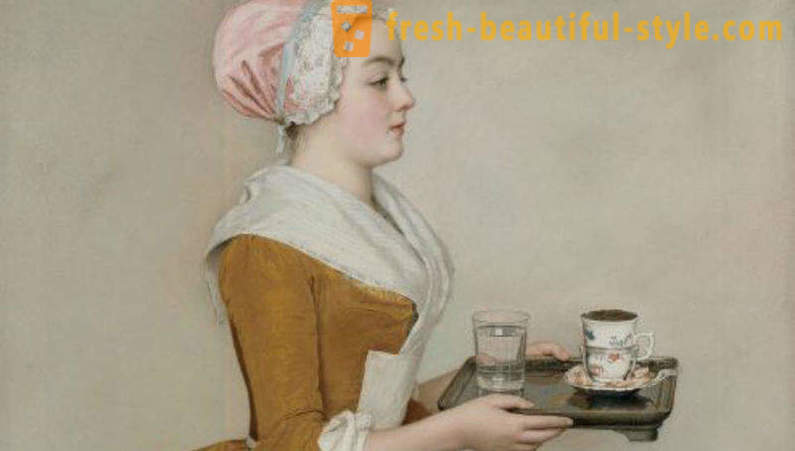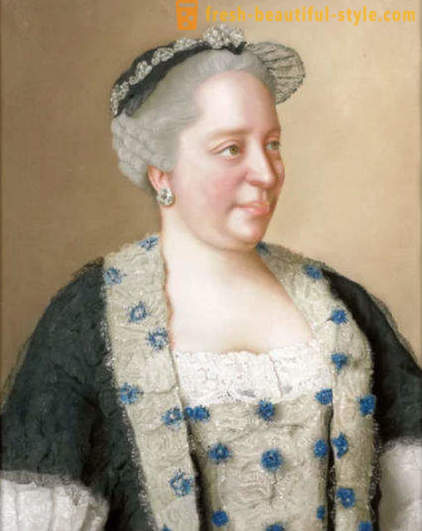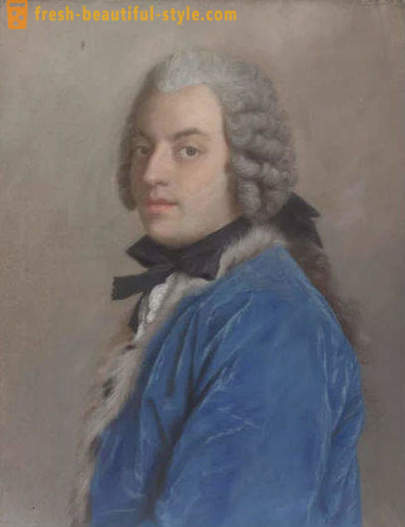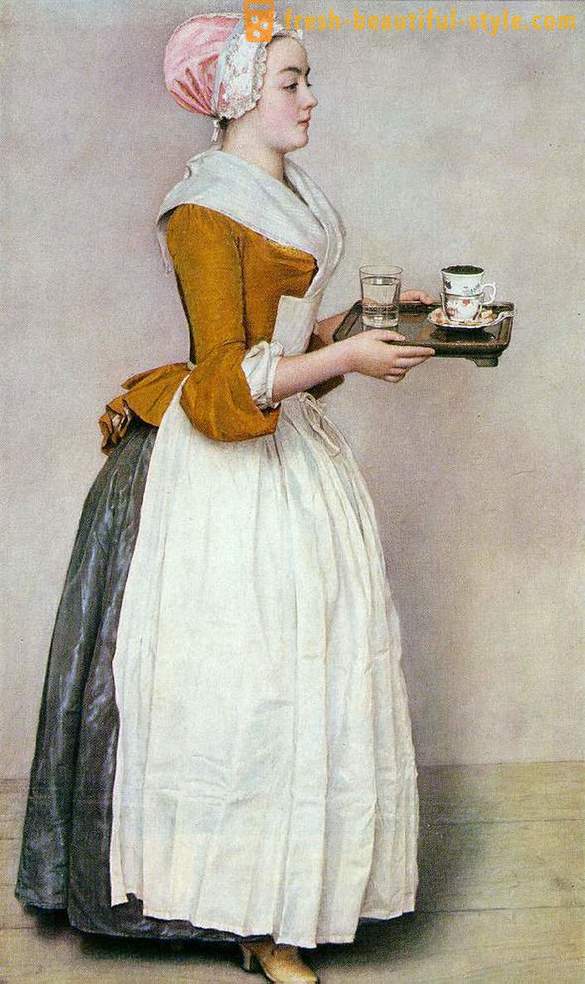The mystery of "Belle Shokoladnitsa"
• The Mystery of 'Beautiful Chocolate Girl "
"Wonderful Chocolate" - a portrait of beautiful woman dressed neatly, gracefully holding a tray with a cup of hot chocolate and a glass of water - one of the most famous works by Jean-Etienne Liotard, and the pearl of Old Masters Gallery in Dresden. Painting is considered a masterpiece of the artist during his lifetime.


Portrait of Empress Maria Theresa. Jean-Etienne Liotard, 1762
The image was created between 1743 and 1745 year at the court of Austrian Empress Maria Theresa. While the Swiss artist was in Vienna, where he painted portraits of the ruler and her husband.
February 3, 1745 painting purchased from Lyotard in Venice Count Francesco Algarotti, who was an art agent two monarchs - King of Prussia Frederick II and the Polish King Augustus III the Saxon. Last February 1751 wrote to his friend, the art critic Pierre-Jean Marietta: "I bought a painting with pastels, about three feet in height, written by famous Lyotard. It shows a young German maid in profile, the carrier tray with a glass of water and a cup of chocolate. The painting is almost devoid of shadows, with a pale background and the light that comes from the two windows, reflected in the glass. It is written with undertones of light imperceptibly and executed to perfection ... and although this is a European picture, it can appeal to the Chinese, who, as you know, are the sworn enemies of the shadows. As for the perfection of the work, it Holbein in pastels. "

Portrait of the writer and philosopher Francesco Algarotti. Jean-Etienne Liotard, 1745
The painting is in the collection of Old Masters Gallery in Dresden since 1855. But who was the model for "Beautiful Chocolate Girl", were not significantly found. Most likely, this is one of the unmarried girls at court painter struck by its beauty. In those days, it was decided to call to the court of the young damsels of the families of the "lower" of the nobility and make them companions for the ladies of the "high" of the nobility.
It is often argued that Lyotard posed Anna (Anneli or Nannel) Baltauf - the daughter of an impoverished gentleman Melchior Baltauf which may have invited to the court as a confidante. The young prince von Dietrichstein was allegedly struck by her beauty, fell in love and got married - to the dismay of all the high society.
This legend is supported by the American chocolate company Walter Baker & Company, which used "Beautiful Chocolate" Lyotard as its logo since 1883. In a small booklet with the recipes of 1913 it was written: "It is unclear whether the duty to submit Anne chocolate or whether it was the secular beauty, who posed in a costume. But be that as it may, her beauty she was struck by Prince Dietrichstein, he married her. This marriage gave rise to a lot of talk in the Austrian society. Caste prejudices in Vienna has always been very strong, and the daughter of a simple gentleman was not considered a suitable match for the court ... "

Perfect Chocolate. Jean-Etienne Liotard, 1745
More romantic version of the story has it that a young Dietrichstein came to the Viennese café to try newfangled drink - hot chocolate. There he met Anna Baltauf that served visitors. He instantly fell in love with the girl and the next few weeks to come to a place almost daily. Eventually he married his passion, in spite of the resistance of the nobility. As a wedding gift he ordered Lyotard portrait of the bride in the clothes, which met her for the first time. Despite the fact that the beginning of the story, "Perfect Chocolate Girl" is more like a fairy tale, its continuation is well documented.
In 1881, Henry Pierce - President Walter Baker, a leading US company for the production of cocoa and chocolate - came to Europe to get acquainted with the methods of cocoa production. In the Dresden Royal Gallery, he saw a picture of Lyotard. His impress and self portrait, and his romantic history - and since then "Lovely Chocolate" has become one of the first registered trademark in economic history. Since 1880 Anna Baltauf image was captured and replicated in millions of tins of cocoa and leaflets.
Around 1900 "Wonderful Chocolate" inspired the artist Jan de Musset (most likely, it was he) to create the image of "nurse" for the brand Droste. In the description it was said that "the illustration indicates the beneficial effect of chocolate milk and is inextricably linked with the name Droste".
During the Second World War, the Germans moved the original picture in the Königstein fortress. Brittle product was able to move the cold and damp. Pastel returned to Dresden after the Nazis retreated under the onslaught of the Soviet armies.













































